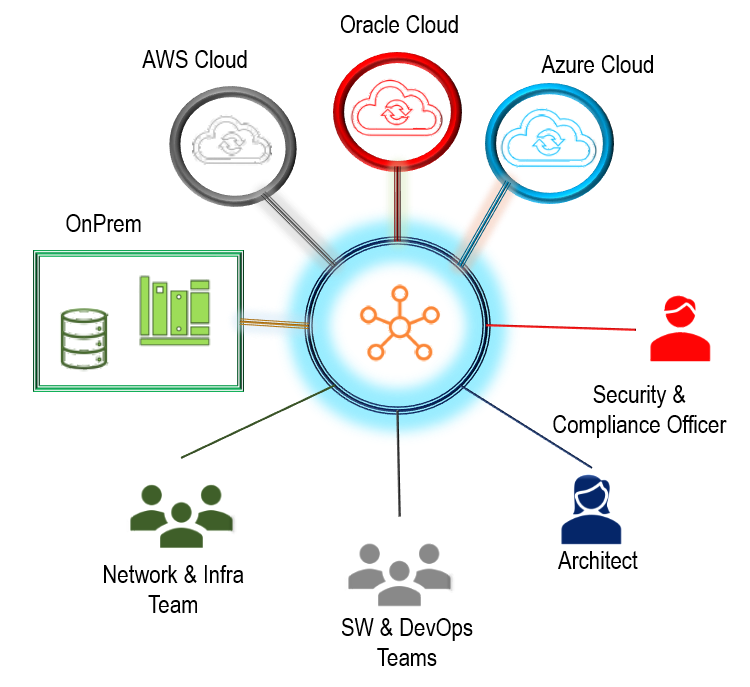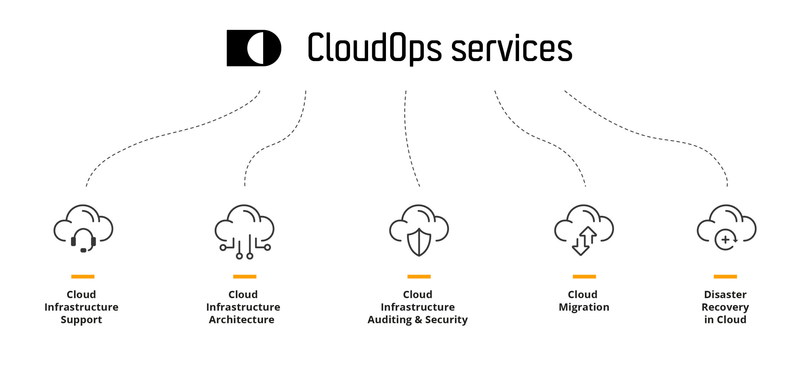What is CloudOps?
Why CloudOps is important?
What are the best Cloud Courses and Certification?
- DevOpsSchool - https://devopsschool.com/courses/cloudops/
- scmagalxy - https://www.scmgalaxy.com/
- BestDevOps - https://www.bestdevops.com/
- CloudOps.in - https://www.cloudopsnow.in/
What is CloudOps?
CloudOps, short for Cloud Operations, is a set of practices and processes aimed at managing and optimizing the operation of cloud infrastructure and services. It involves various tasks, such as deploying applications, monitoring performance, ensuring security, and optimizing costs in a cloud computing environment. Here are some examples of CloudOps in action:
Auto Scaling: CloudOps teams use auto-scaling capabilities provided by cloud service providers to automatically adjust the number of resources (e.g., virtual machines) based on demand. For example, during periods of high traffic, an e-commerce website can automatically add more servers to handle the increased load and then reduce them during quieter times to save costs.
Continuous Integration and Continuous Deployment (CI/CD): CloudOps teams use CI/CD pipelines to automate the process of building, testing, and deploying applications in the cloud. This ensures that code changes are deployed quickly and reliably, reducing downtime and improving overall service quality.
Monitoring and Alerting: CloudOps professionals use monitoring tools to track the performance and health of cloud-based applications and infrastructure. For instance, they may set up alerts to notify them if server CPU usage exceeds a certain threshold, enabling them to take proactive measures before performance issues occur.
Security and Compliance: CloudOps teams implement security best practices to protect data and applications in the cloud. This includes configuring firewalls, access controls, and encryption, as well as ensuring compliance with industry-specific regulations like HIPAA or GDPR.
Cost Optimization: CloudOps experts analyze cloud usage and spending patterns to optimize costs. They may identify underutilized resources and suggest rightsizing or recommend reserved instances to save money. Additionally, they can set up budget alerts to prevent unexpected cost overruns.
Disaster Recovery: CloudOps involves planning for and implementing disaster recovery strategies in the cloud. For instance, data can be regularly backed up to a different geographic region, ensuring that critical data remains accessible even in the event of a disaster.
Resource Tagging: CloudOps professionals use resource tagging to label resources with metadata, making it easier to track and manage resources. For example, they might tag resources with information about their owner, project, or purpose.
Infrastructure as Code (IaC): IaC is a practice where infrastructure is defined and provisioned using code. CloudOps teams use tools like Terraform or AWS CloudFormation to automate the creation of infrastructure components, making it easier to replicate and maintain environments.
Container Orchestration: In scenarios where containers are used, CloudOps teams utilize container orchestration platforms like Kubernetes to manage and scale containerized applications efficiently.
Why CloudOps is important?
CloudOps, short for Cloud Operations, is crucial in the modern IT landscape due to the many benefits it offers, including improved efficiency, reliability, and cost-effectiveness. Here are some examples that highlight why CloudOps is important:
Scalability: CloudOps enables organizations to scale their infrastructure up or down based on demand. For instance, a retail company can handle increased web traffic during holiday seasons by automatically provisioning additional cloud servers. Conversely, they can scale down during quieter periods to save costs.
Reliability: CloudOps practices such as redundancy and failover configurations ensure high availability. For example, a CloudOps team might set up a multi-region database replication to ensure data availability even if one region experiences an outage.
Agility: With CloudOps, organizations can rapidly deploy and update applications. For instance, a software company can release new features to its users frequently without long downtimes or complex manual processes.
Cost Optimization: CloudOps helps manage costs effectively. An e-commerce site can use cost-monitoring tools to identify and eliminate unused or underutilized resources, resulting in significant cost savings.
Security: CloudOps teams implement robust security measures to protect data and applications. They can set up continuous security scanning and automated patching to mitigate vulnerabilities, reducing the risk of data breaches.
**
Disaster Recovery**: CloudOps ensures data and applications are backed up and can be quickly restored in case of disasters. For example, a financial institution can replicate data to a geographically distant region to safeguard against data loss.
Resource Efficiency: CloudOps practices like auto-scaling and rightsizing ensure resources are used efficiently. A media streaming service can automatically allocate more resources during peak viewing hours and reduce them during off-peak times, optimizing costs.
Compliance: CloudOps helps organizations adhere to regulatory requirements. A healthcare provider can implement access controls, encryption, and auditing to ensure compliance with healthcare data privacy regulations like HIPAA.
Collaboration: CloudOps fosters collaboration by providing a centralized platform for teams to work on projects. For instance, a global software development team can use cloud-based collaboration tools and version control to work on the same codebase seamlessly.
Innovation: CloudOps allows organizations to experiment and innovate rapidly. A startup can quickly spin up and test new services without the need for a large upfront investment in physical infrastructure.
Global Reach: Cloud providers offer data centers in multiple regions, enabling businesses to reach a global audience easily. An e-learning platform can host content in various regions to provide low-latency access to learners worldwide.
Cost Predictability: CloudOps teams can forecast and plan for costs more accurately, thanks to cloud billing and budgeting tools. This helps organizations avoid unexpected expenses.
What are the best Cloud Courses and Certification?
- DevOpsSchool - https://devopsschool.com/courses/cloudops/
- scmagalxy - https://www.scmgalaxy.com/
- BestDevOps - https://www.bestdevops.com/
- CloudOps.in - https://www.cloudopsnow.in/
devopsschool
CloudOps, also known as Cloud Operations, refers to the process of managing and maintaining cloud-based infrastructure and services. It involves the ongoing monitoring, automation, and optimization of cloud resources to ensure their availability, reliability, and security. CloudOps is a crucial aspect of cloud computing, as it enables organizations to manage their cloud environments effectively and efficiently. CloudOps professionals are responsible for configuring, deploying, and managing cloud-based services, including virtual machines, storage, databases, networking, and security.
Some of the key activities involved in CloudOps include:
Monitoring and managing cloud resources to ensure they are performing optimally and meeting service level agreements (SLAs).
Implementing automation to streamline the deployment and management of cloud resources.
Scaling resources up or down to meet changing demand.
Ensuring the security of cloud resources, including data protection, access control, and compliance with regulatory requirements.
Managing costs and optimizing spending on cloud resources.



Top comments (0)